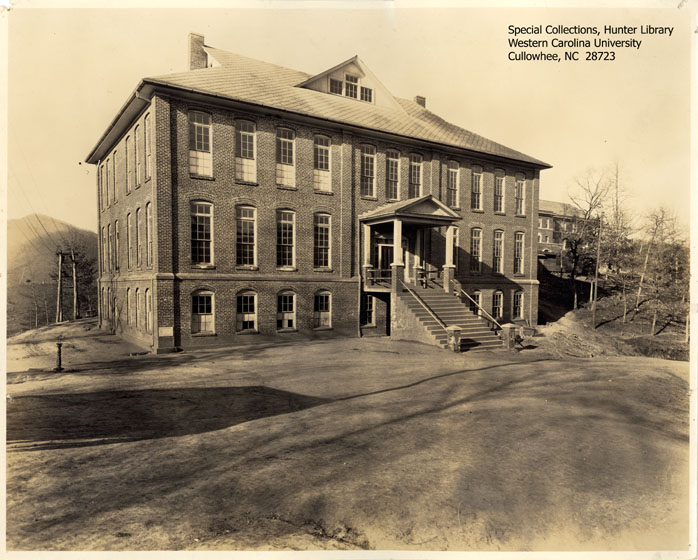|
Patch-nosed Salamander
''Urspelerpes'' is a monotypic genus of salamanders in the family Plethodontidae (the lungless salamanders). It is represented by a single species, the patch-nosed salamander (''Urspelerpes brucei''), a lungless miniature salamander found in streams of Georgia and South Carolina, United States. It marks the first discovery of an endemic amphibian genus from the United States since the Red Hills salamander (''Phaeognathus'') in 1961. Description This genus is believed to be closely related to brook salamanders (genus '' Eurycea''), but have five toes on their feet. A distinctive characteristic is a yellowish patch on the snout. ''Urspelerpes'' is tiny, and adults are about long. Males and females have different coloration, with males having a pair of dark stripes running down their bodies, with yellow backs, and females being more muted in color (a more common trait in birds). Similar to other salamander species, this genus is believed to eat small terrestrial prey using ... [...More Info...] [...Related Items...] OR: [Wikipedia] [Google] [Baidu] |
Journal Of Zoology
The ''Journal of Zoology'' is a scientific journal concerning zoology, the study of animals. It was founded in 1830 by the Zoological Society of London and is published by Wiley-Blackwell. It carries original research papers, which are targeted towards general readers. Some of the articles are available via open access, depending on the author's wishes. According to the ''Journal Citation Reports'', the journal has a 2020 impact factor of 2.322, ranking it 36th out of 175 journals in the category "Zoology". From around 1833, it was known as the ''Proceedings of the Zoological Society of London'' (). From 1965 to 1984, it was known as the ''Journal of Zoology: Proceedings of the Zoological Society of London'' (). See also * List of zoology journals This is a list of scientific journals which cover the field of zoology. A * '' Acta Entomologica Musei Nationalis Pragae'' * '' Acta Zoologica Academiae Scientiarum Hungaricae'' * '' Acta Zoologica Bulgarica'' * ''Acta Zoologica Mex ... [...More Info...] [...Related Items...] OR: [Wikipedia] [Google] [Baidu] |
Stephens County, Georgia
Stephens County is a county in the northeastern part of the U.S. state of Georgia, in the Piedmont and near the foothills of the Blue Ridge Mountains. It is bounded by the Tugaloo River and Lake Hartwell on the east. As of the 2010 census, the population was 26,175. The county seat is Toccoa. Stephens County comprises the Toccoa, Georgia Micropolitan Statistical Area. History The county was long inhabited by indigenous peoples. People of the South Appalachian Mississippian culture developed a village and a platform mound on Tugaloo Island about 800 CE. The village and mound, both known as Tugaloo, were later occupied by other peoples until about 1700. Numerous other villages also developed along the river and its tributaries. Descendants of the Mississippians have been identified as the proto-Creek (Muscogee people). Allied with them in historic times were the Yuchi, who occupied the village known as Tugaloo, where they were replaced by the Cherokee. While Cherokee began ... [...More Info...] [...Related Items...] OR: [Wikipedia] [Google] [Baidu] |
Natural History Of Georgia (U
Nature, in the broadest sense, is the physical world or universe. "Nature" can refer to the phenomena of the physical world, and also to life in general. The study of nature is a large, if not the only, part of science. Although humans are part of nature, human activity is often understood as a separate category from other natural phenomena. The word ''nature'' is borrowed from the Old French ''nature'' and is derived from the Latin word ''natura'', or "essential qualities, innate disposition", and in ancient times, literally meant "birth". In ancient philosophy, ''natura'' is mostly used as the Latin translation of the Greek word ''physis'' (φύσις), which originally related to the intrinsic characteristics of plants, animals, and other features of the world to develop of their own accord. The concept of nature as a whole, the physical universe, is one of several expansions of the original notion; it began with certain core applications of the word φύσις by pre-Socr ... [...More Info...] [...Related Items...] OR: [Wikipedia] [Google] [Baidu] |
Fauna Of The Southeastern United States
Fauna is all of the animal life present in a particular region or time. The corresponding term for plants is ''flora'', and for fungi, it is ''funga''. Flora, fauna, funga and other forms of life are collectively referred to as '' biota''. Zoologists and paleontologists use ''fauna'' to refer to a typical collection of animals found in a specific time or place, e.g. the "Sonoran Desert fauna" or the "Burgess Shale fauna". Paleontologists sometimes refer to a sequence of faunal stages, which is a series of rocks all containing similar fossils. The study of animals of a particular region is called faunistics. Etymology ''Fauna'' comes from the name Fauna, a Roman goddess of earth and fertility, the Roman god Faunus, and the related forest spirits called Fauns. All three words are cognates of the name of the Greek god Pan, and ''panis'' is the Greek equivalent of fauna. ''Fauna'' is also the word for a book that catalogues the animals in such a manner. The term was first used by ... [...More Info...] [...Related Items...] OR: [Wikipedia] [Google] [Baidu] |
Endemic Amphibians Of The United States
Endemism is the state of a species being found in a single defined geographic location, such as an island, state, nation, country or other defined zone; organisms that are indigenous to a place are not endemic to it if they are also found elsewhere. For example, the Cape sugarbird is found exclusively in southwestern South Africa and is therefore said to be ''endemic'' to that particular part of the world. An endemic species can be also be referred to as an ''endemism'' or in scientific literature as an ''endemite''. For example '' Cytisus aeolicus'' is an endemite of the Italian flora. '' Adzharia renschi'' was once believed to be an endemite of the Caucasus, but it was later discovered to be a non-indigenous species from South America belonging to a different genus. The extreme opposite of an endemic species is one with a cosmopolitan distribution, having a global or widespread range. A rare alternative term for a species that is endemic is "precinctive", which applies to ... [...More Info...] [...Related Items...] OR: [Wikipedia] [Google] [Baidu] |
Monotypic Amphibian Genera
In biology, a monotypic taxon is a taxonomic group (taxon) that contains only one immediately subordinate taxon. A monotypic species is one that does not include subspecies or smaller, infraspecific taxa. In the case of genera, the term "unispecific" or "monospecific" is sometimes preferred. In botanical nomenclature, a monotypic genus is a genus in the special case where a genus and a single species are simultaneously described. In contrast, an oligotypic taxon contains more than one but only a very few subordinate taxa. Examples Just as the term ''monotypic'' is used to describe a taxon including only one subdivision, the contained taxon can also be referred to as monotypic within the higher-level taxon, e.g. a genus monotypic within a family. Some examples of monotypic groups are: Plants * In the order Amborellales, there is only one family, Amborellaceae and there is only one genus, '' Amborella'', and in this genus there is only one species, namely ''Amborella trichopoda.' ... [...More Info...] [...Related Items...] OR: [Wikipedia] [Google] [Baidu] |
Western Carolina University
Western Carolina University (WCU) is a public university in Cullowhee, North Carolina. It is part of the University of North Carolina system. The fifth oldest institution of the sixteen four-year universities in the UNC system, WCU was founded to educate the people of the western North Carolina mountains. WCU provides an education to students from 48 states and 35 countries. Enrollment for the Fall 2020 semester was 12,243 students. History In 1888, the residents of Cullowhee desired a better school for the community than was offered in public schools of that day, organized a board of trustees and established a community school that came to be known as Cullowhee Academy. Founded in August 1889 as a semi-public secondary school and chartered as Smoky Mountain High School#Cullowhee High School, Cullowhee High School in 1891 (also called Cullowhee Academy), it served the Cullowhee community and boarding students from neighboring counties and other states. The founder, Robert Lee ... [...More Info...] [...Related Items...] OR: [Wikipedia] [Google] [Baidu] |
Specific Name (zoology)
In zoological nomenclature, the specific name (also specific epithet or species epithet) is the second part (the second name) within the scientific name of a species (a binomen). The first part of the name of a species is the name of the genus or the generic name. The rules and regulations governing the giving of a new species name are explained in the article species description. For example, the scientific name for humans is ''Homo sapiens'', which is the species name, consisting of two names: ''Homo'' is the " generic name" (the name of the genus) and ''sapiens'' is the "specific name". Historically, ''specific name'' referred to the combination of what are now called the generic and specific names. Carl Linnaeus, who formalized binomial nomenclature, made explicit distinctions between specific, generic, and trivial names. The generic name was that of the genus, the first in the binomial, the trivial name was the second name in the binomial, and the specific the proper term for ... [...More Info...] [...Related Items...] OR: [Wikipedia] [Google] [Baidu] |
Ancient Greek
Ancient Greek includes the forms of the Greek language used in ancient Greece and the ancient world from around 1500 BC to 300 BC. It is often roughly divided into the following periods: Mycenaean Greek (), Dark Ages (), the Archaic period (), and the Classical period (). Ancient Greek was the language of Homer and of fifth-century Athenian historians, playwrights, and philosophers. It has contributed many words to English vocabulary and has been a standard subject of study in educational institutions of the Western world since the Renaissance. This article primarily contains information about the Epic and Classical periods of the language. From the Hellenistic period (), Ancient Greek was followed by Koine Greek, which is regarded as a separate historical stage, although its earliest form closely resembles Attic Greek and its latest form approaches Medieval Greek. There were several regional dialects of Ancient Greek, of which Attic Greek developed into Koine. Dia ... [...More Info...] [...Related Items...] OR: [Wikipedia] [Google] [Baidu] |
Daniel B
''Daniel'' is an anonymous Old English poem based loosely on the Biblical Book of Daniel, found in the Junius Manuscript. The author and the date of ''Daniel'' are unknown. Critics have argued that Cædmon is the author of the poem, but this theory has been since disproved. ''Daniel'', as it is preserved, is 764 lines long. There have been numerous arguments that there was originally more to this poem than survives today. The majority of scholars, however, dismiss these arguments with the evidence that the text finishes at the bottom of a page, and that there is a simple point, which translators assume indicates the end of a complete sentence. ''Daniel'' contains a plethora of lines which Old English scholars refer to as “hypermetric” or long. Daniel is one of the four major Old Testament prophets, along with Isaiah, Jeremiah, and Ezekiel. The poet even changed the meaning of the story from remaining faithful while you are being persecuted to a story dealing with pride, which ... [...More Info...] [...Related Items...] OR: [Wikipedia] [Google] [Baidu] |
Toccoa, Georgia
Toccoa is a city in far Northeast Georgia (U.S. state), Georgia near the border with South Carolina. It is the county seat of Stephens County, Georgia, Stephens County, Georgia (U.S. state), Georgia, United States, located about from Athens, Georgia, Athens and about northeast of Atlanta. The population was 9,133 as of the 2020 census. History Native Americans, including indigenous peoples of the Mississippian culture, and historic Yuchi (linked to the Muscogee Creek confederacy and later allies of the Cherokee), occupied Tugaloo and the area of Toccoa for at least 1,000 years prior to European settlement. The Mississippian culture was known for building earthen platform mounds; in the Mississippi and Ohio valleys, the people developed some large, dense cities and complexes featuring multiple mounds and, in some cases, thousands of residents. In what is known as the regional South Appalachian Mississippian culture, by contrast, settlements were smaller and the peoples typically ... [...More Info...] [...Related Items...] OR: [Wikipedia] [Google] [Baidu] |

.jpg)

.jpg)


